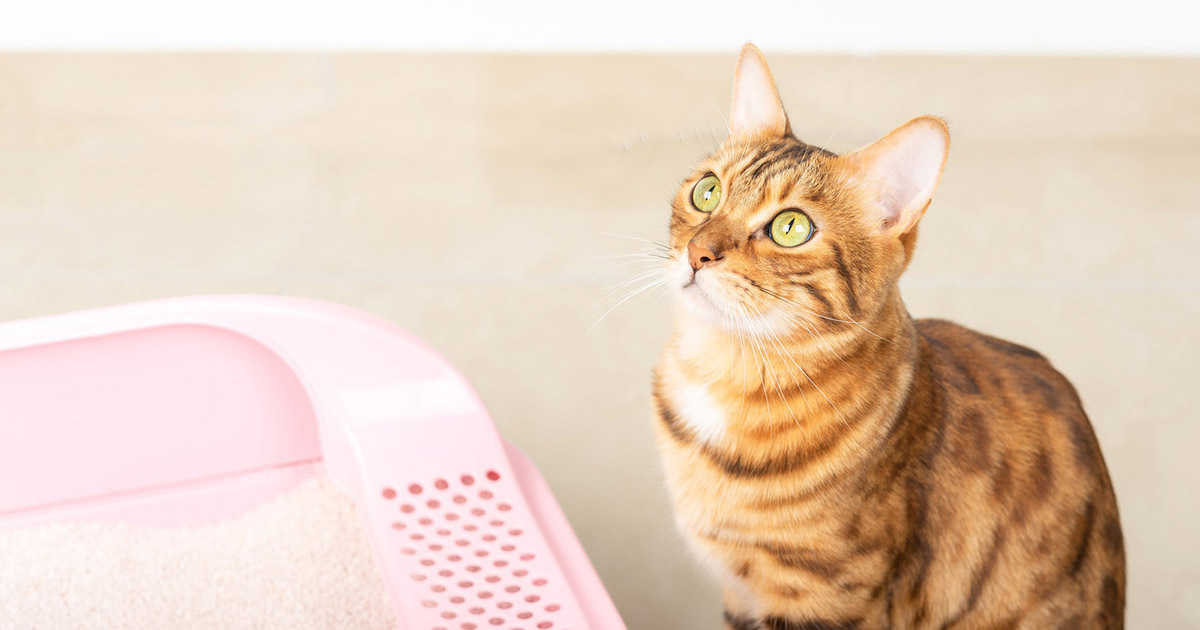They are making a number of great points on the subject of Don’t flush cat feces down the toilet overall in this article in the next paragraphs.

Intro
As cat owners, it's vital to be mindful of exactly how we dispose of our feline pals' waste. While it might seem practical to purge pet cat poop down the toilet, this method can have harmful repercussions for both the atmosphere and human health.
Alternatives to Flushing
Luckily, there are much safer and more accountable methods to get rid of feline poop. Take into consideration the adhering to alternatives:
1. Scoop and Dispose in Trash
The most typical technique of disposing of cat poop is to scoop it into a naturally degradable bag and toss it in the trash. Make sure to make use of a specialized clutter inside story and throw away the waste without delay.
2. Usage Biodegradable Litter
Go with biodegradable cat trash made from products such as corn or wheat. These trashes are eco-friendly and can be securely taken care of in the garbage.
3. Hide in the Yard
If you have a backyard, take into consideration hiding cat waste in an assigned location away from vegetable gardens and water sources. Be sure to dig deep adequate to stop contamination of groundwater.
4. Mount a Pet Waste Disposal System
Purchase a family pet garbage disposal system particularly developed for cat waste. These systems use enzymes to break down the waste, lowering smell and environmental impact.
Health Risks
Along with ecological issues, flushing cat waste can additionally posture wellness threats to people. Cat feces may have Toxoplasma gondii, a bloodsucker that can trigger toxoplasmosis-- a potentially extreme health problem, especially for pregnant females and people with weakened body immune systems.
Ecological Impact
Flushing pet cat poop presents hazardous pathogens and bloodsuckers into the water supply, posturing a considerable threat to water communities. These contaminants can adversely impact aquatic life and compromise water quality.
Verdict
Responsible pet dog ownership expands past providing food and sanctuary-- it additionally involves correct waste administration. By avoiding flushing pet cat poop down the bathroom and opting for different disposal methods, we can decrease our environmental impact and shield human wellness.
Why Can’t I Flush Cat Poop?
It Spreads a Parasite
Cats are frequently infected with a parasite called toxoplasma gondii. The parasite causes an infection called toxoplasmosis. It is usually harmless to cats. The parasite only uses cat poop as a host for its eggs. Otherwise, the cat’s immune system usually keeps the infection at low enough levels to maintain its own health. But it does not stop the develop of eggs. These eggs are tiny and surprisingly tough. They may survive for a year before they begin to grow. But that’s the problem.
Our wastewater system is not designed to deal with toxoplasmosis eggs. Instead, most eggs will flush from your toilet into sewers and wastewater management plants. After the sewage is treated for many other harmful things in it, it is typically released into local rivers, lakes, or oceans. Here, the toxoplasmosis eggs can find new hosts, including starfish, crabs, otters, and many other wildlife. For many, this is a significant risk to their health. Toxoplasmosis can also end up infecting water sources that are important for agriculture, which means our deer, pigs, and sheep can get infected too.
Is There Risk to Humans?
There can be a risk to human life from flushing cat poop down the toilet. If you do so, the parasites from your cat’s poop can end up in shellfish, game animals, or livestock. If this meat is then served raw or undercooked, the people who eat it can get sick.
In fact, according to the CDC, 40 million people in the United States are infected with toxoplasma gondii. They get it from exposure to infected seafood, or from some kind of cat poop contamination, like drinking from a stream that is contaminated or touching anything that has come into contact with cat poop. That includes just cleaning a cat litter box.
Most people who get infected with these parasites will not develop any symptoms. However, for pregnant women or for those with compromised immune systems, the parasite can cause severe health problems.
How to Handle Cat Poop
The best way to handle cat poop is actually to clean the box more often. The eggs that the parasite sheds will not become active until one to five days after the cat poops. That means that if you clean daily, you’re much less likely to come into direct contact with infectious eggs.
That said, always dispose of cat poop in the garbage and not down the toilet. Wash your hands before and after you clean the litter box, and bring the bag of poop right outside to your garbage bins.
https://trenchlesssolutionsusa.com/why-cant-i-flush-cat-poop/

Do you enjoy reading about How to Dispose of Cat Poop and Litter Without Plastic Bags? Make a comment down below. We will be pleased to listen to your feelings about this post. We hope that you visit us again in the future. Those who liked our page plz be sure to pass it around. I praise you for your time. Please come visit our website back soon.
Schedule Your Service
Comments on “Why You Shouldn't Flush Cat Poop Down Your Toilet - Preserve Your Plumbing Health”